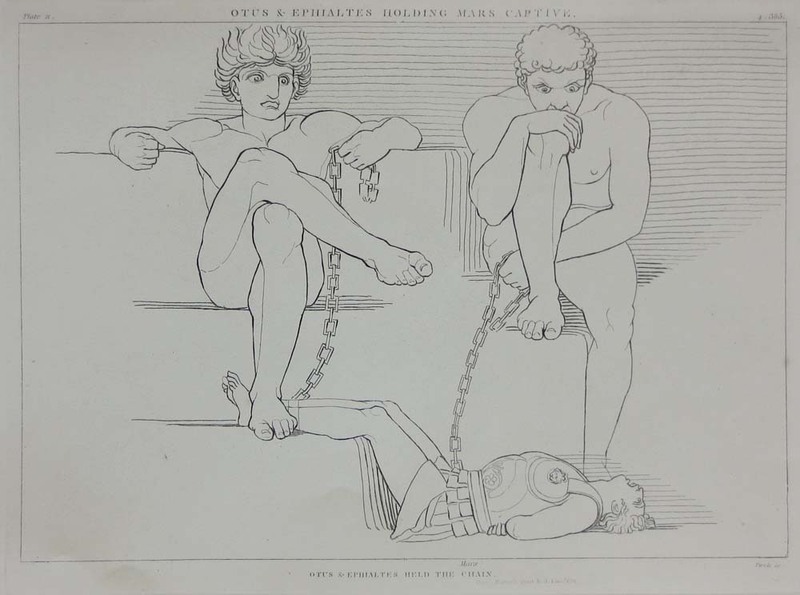The Classical Compositions of John Flaxman
John Flaxman, 1755-1826.
The Classical Compositions of John Flaxman, Sculptor.
London: Bell and Daldy, 1870.
Call Number: (SPL)(FOL) NC 242 .F57 P5x
Special Collections, Golda Meir Library
This volume reprints the designs of John Flaxman of illustrations for The Iliad and The Odyssey. Flaxman was an eighteenth century artist most well known for his sculptures and drawings. His work on Homer's poems began while on a pilgrimage to Rome in the early 1790s.
His designs were immediately praised by artists and writers throughout Europe as contemporary expressions of those cultural ideals embodied in classical art. However, the popularity of the designs lessened in the nineteenth century until they were looked upon as suitable for non-scholarly editions, and not worthy of serious study.
Flaxman scholars Robert Essick and Jenijoy La Belle wrote of his designs:
The flattened, two-dimensional spaces of antique paintings and relief sculpture—carefully retained in almost all of Flaxman's classical compositions—stress a directness and simplicity free of the baroque illusionism which neo-classical artists were reacting against. Thus the Iliad and Odyssey plates were received not simply as visual delights but as philosophical statements.
Flaxman himself wrote that the artist's duty was "to convert the beauty and grace of ancient poetry to the service of the morals and establishments of our own time and country."

